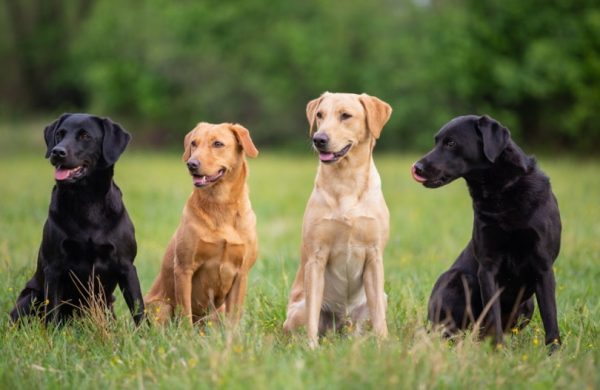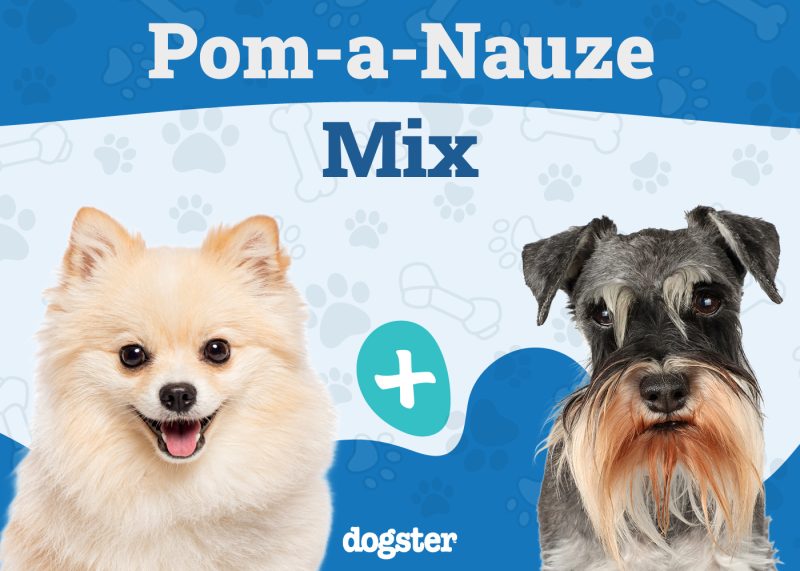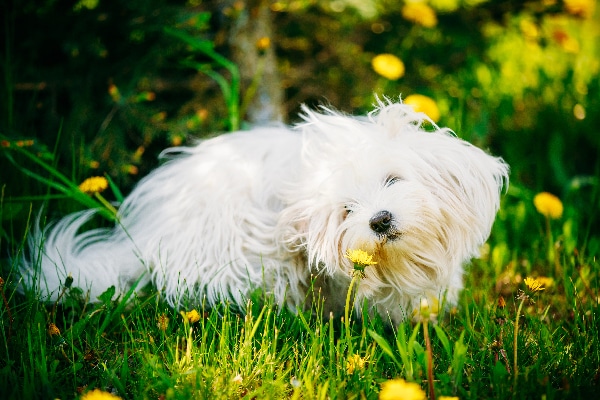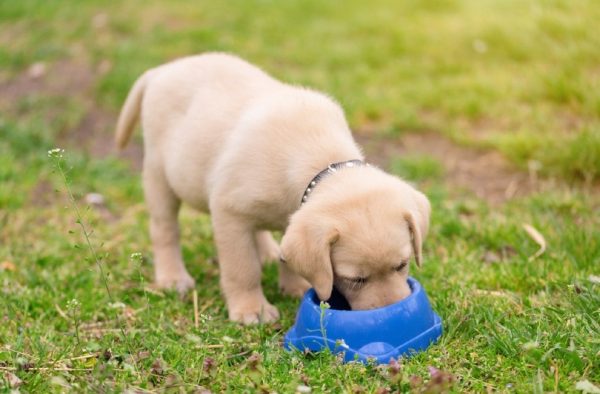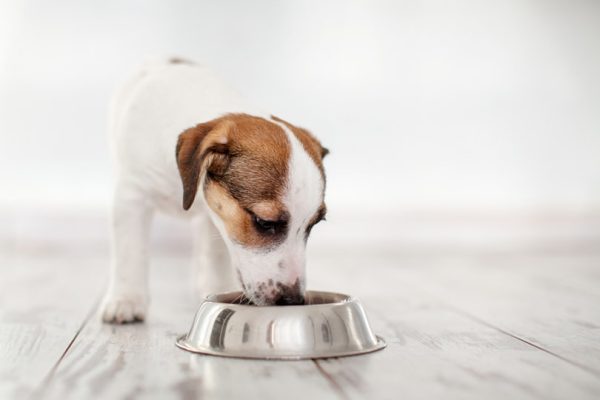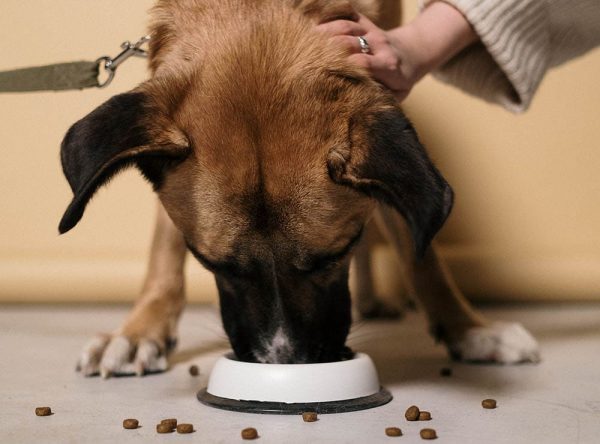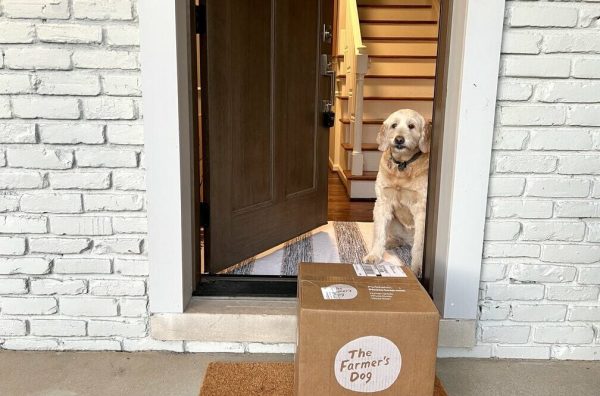In this article
View 2 More +It happens to people every year around Halloween. They wake up and walk into the kitchen to find that their candy stash has been raided by their dog. This can be a mess and lead to fear and confusion. Many types of candy are very dangerous for dogs and if a dog has eaten any amount of Halloween candy, especially mixed or miscellaneous candy, it should be considered a potential emergency. Here is what you need to do if your dog eats Halloween candy.

Here’s What to Do
1. Call the Pet Poison Hotline or Your Veterinarian
If you suspect that your dog has eaten candy that could contain toxic ingredients, you need to stop and call a pet poison hotline or your veterinarian immediately. Getting on the phone to get instant advice about what to do for your dog is imperative, and in worst case scenarios, it could mean the difference between life and death.
If you live in the U.S., there are two primary pet poison hotlines that you should be aware of. Both of these lines are active 24/7 and are open 365 days per year.
ASPCA Poison Control: 1-(888) 426-4435
Pet Poison Hotline: 1-(855) 764-7661*
* fee applied at the time of the call
You should call one of these numbers, or your vet, for advice right away if your dog has eaten Halloween candy. If they are showing concerning signs such as excessive panting, vomiting, diarrhea, weakness, or seizures, then seek emergency veterinary treatment straight away.
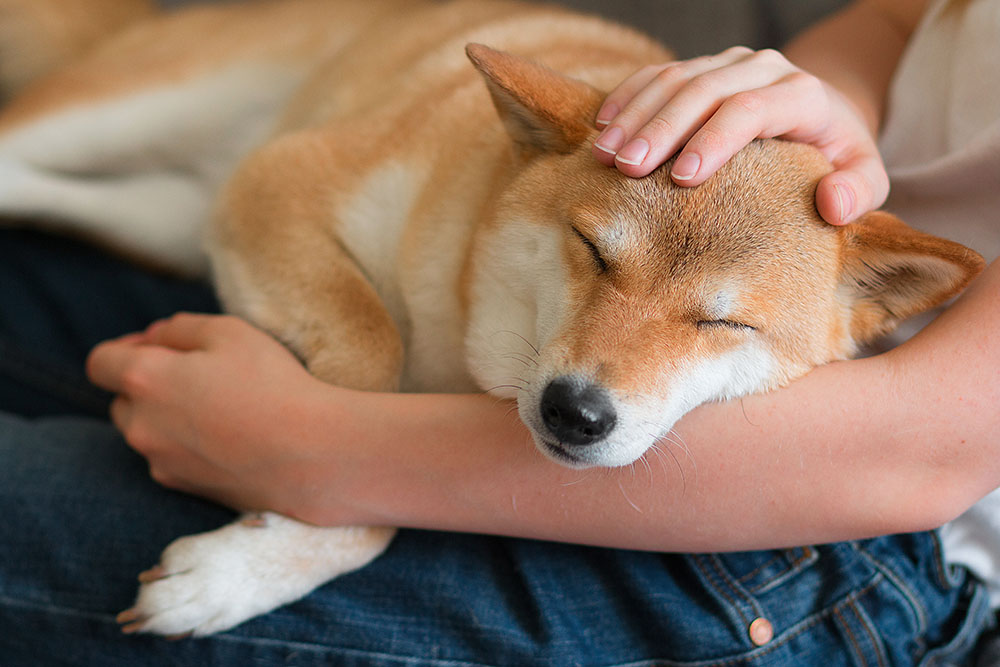
2. Determine How Much Candy Was Eaten
While you are on the phone with poison control (or your veterinarian), they will want you to gather some information. How much candy was eaten is a part of this information. You need to determine if your dog ate a few pieces of candy or a whole bag of candy. Try to remember how much candy was available before your dog got into it. You can also look for signs such as wrappers lying around to give you an idea of the volume of candy consumed.
If you need to speak with a vet but can't get to one, head over to PangoVet. It's our online service where you can talk to a vet online and get the advice you need for your pet — all at an affordable price!
3. Determine What Kind of Candy Was Eaten
You also want to determine what kind of candy was eaten. Some candy contains incredibly harmful ingredients for dogs. Knowing exactly what your dog ate is imperative to getting the proper treatment plan. Make a note of what type of candy was consumed in addition to the amount. Again, look for packaging and wrappers to clue you to what was eaten.
4. Determine When the Candy Was Eaten
Another critical piece of information to provide to your veterinary professional is when the candy was eaten, or how long has passed since they ate the candy, as this will affect treatment options. If you do not know exactly, try to estimate based on when the dog had the opportunity to eat the candy and/or the last time the dog was unsupervised. In some emergencies, you will be advised to load your dog into the car and drive quickly to the nearest animal hospital for treatment.

5. Monitor Your Dog
During this process, you should monitor your dog for any concerning signs. If your dog starts showing signs of illness or starts to progress to a worse state, you will need to go to the emergency veterinary hospital right away to get treatment.
- Vomiting
- Diarrhea
- Seizures
- Lethargy
- Shaking
- Inability to get up
- Irregular breathing
- Panting
- Rapid heart rate
6. Follow Medical Advice as It Is Given
At this point, you should have contacted either the pet poison hotline or your veterinarian to seek advice. Once you have all of the information gathered and you are monitoring your dog, you need to follow the instructions given to you very closely. Follow all instructions, even if they seem extreme or inconvenient. If they tell you to drive your dog to the vet right away, you should start driving. Do not try to make your dog vomit at home unless specifically instructed to by your vet. Doing so can make some problems worse and may cause additional complications. Following veterinary instructions, especially early on, can drastically improve your dog’s prognosis when it comes to ingestion of anything toxic.
7. Try to Stay Calm (Don’t Panic)
While it can be scary to deal with a dog emergency, panicking will not help the situation. Try to stay calm so you can follow instructions clearly and make the best decisions possible for your dog. If you start to panic or get crippled by anxiety, you will not be able to provide the care your dog needs during a potential emergency. Listen to instructions, use your head, and try to keep a goal in mind.
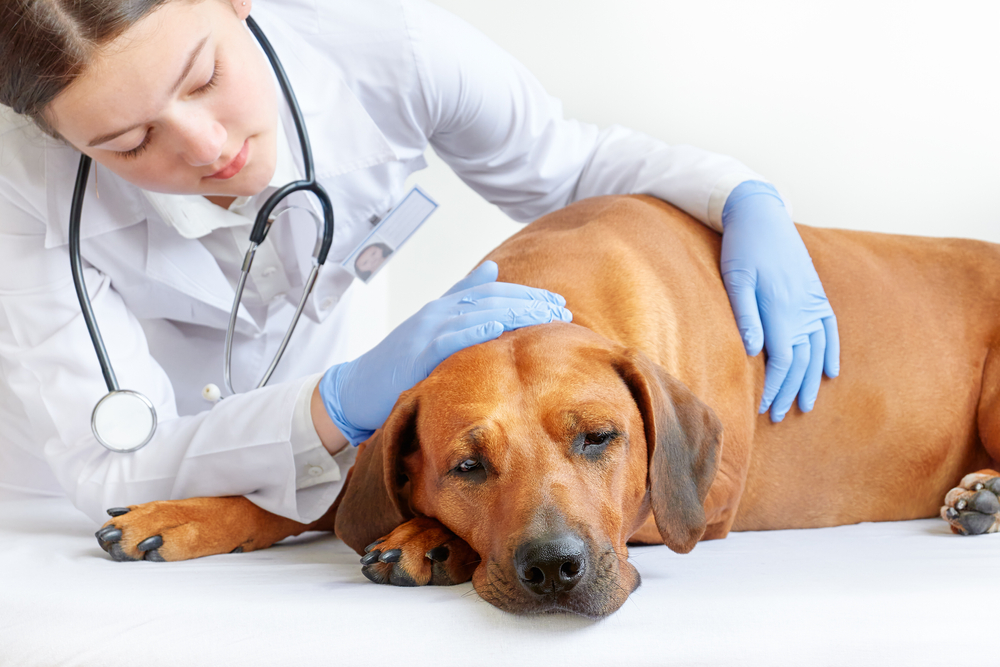

Dangerous Halloween Candy Ingredients to Be Aware Of
The reason that eating Halloween candy can become an emergency is because candy is often filled with potentially dangerous ingredients for dogs. Since Halloween candy is often a mixture, there is a high chance that the candy will contain something harmful. The following ingredients tend to be the most dangerous and some of the most common.
Xylitol
Xylitol is not as common as it once was, but it can still be found in many types of candy. Xylitol is a type of artificial sweetener that is most commonly found in gum and hard candy. Xylitol is extremely toxic to dogs, and it can be fatal even if ingested in small quantities. It rapidly causes a dangerous drop in a dog’s blood sugar levels and can lead to liver failure, seizures, and coma. If your dog has eaten any amount of candy containing xylitol they need to be seen by a veterinarian immediately.
Chocolate
Chocolate is a well-known ingredient that is toxic to dogs. How serious chocolate poisoning is depends on how much chocolate your dog has eaten, their size and the cocoa content of the chocolate. In general the darker the chocolate, the more toxic it is. If your dog has eaten chocolate candy, don’t wait for signs to occur. Contact your vet or a pet poison helpline straight away and they will be able to advise you on what action needs to be taken based on the amount and type of chocolate your dog has eaten.

Raisins
Raisins are also toxic to dogs and should be avoided at all costs. Raisins can appear in Halloween candy as chocolate-covered raisins or as an ingredient in trail mix. Unlike chocolate, the toxic dose varies from dog to dog and in some cases can be very small. Raisins can cause kidney failure in serious cases so always contact your veterinarian immediately if your dog has eaten any amount.
Dangerous Packaging
Lastly, something a lot of people don’t think about is the type of packaging that can come with Halloween candy. Many candies can pose choking hazards to dogs. Suckers and lollipops come with sticks that can get lodged in a dog’s throat or pierce their intestines. Ring Pops or other candied jewelry can have plastic rings or strings that can also become lodged inside your dog. These can lead to choking incidents or gastrointestinal blockages, and can sometimes be even more dangerous than the candy itself.
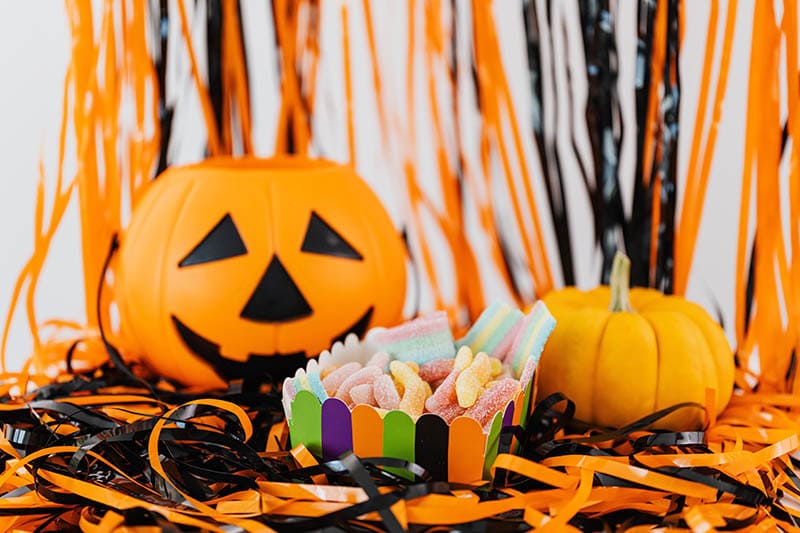

Can Dogs Eat Candy Wrappers?
Unfortunately, candy wrappers can also cause problems for dogs. Paper wrappers will generally cause less of an issue than plastic wrappers, but both if eaten in large quantities can cause a gastrointestinal obstruction. You should also be careful of choking hazards that come with wrappers, such as lollipop sticks and rings. Ask your vet for advice about the type and number of wrappers you think your dog has eaten.

Conclusion
Eating Halloween candy can cause a medical emergency for your dog. It is critical to move in a timely manner, follow all advice from professionals, and try to stay calm. If the problem is treated early and by veterinary professionals, the prognosis is usually good. Not all Halloween candy is toxic to dogs, but if you notice that your dog has ingested something potentially dangerous, you need to seek veterinary advice straight away. You should err on the side of caution and treat all Halloween candy as dangerous, especially in the initial stages, just to be safe.
See also:
Featured Image Credit: Kristina Paukshtite, Pexels


